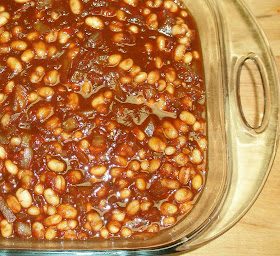
The first recipe I tried was the "Banana-Blueberry Pancakes" on page 516. Where better to start than with breakfast? The first thing I did was review the recipe to see what changes, if any, I would need to make in order to meet my challenge of no added oil, and using only whole grains. The recipe as written calls for 2 tablespoons of melted vegan margarine to go in the pancake batter, and oil on the skillet for frying the pancakes. Adjustments to this seemed easy enough - the batter itself sounded like it would be plenty rich with the mashed banana and soymilk, so I didn't think I would miss the added fat, and I have excellent non-stick skillets, so no need to add oil when cooking the pancakes. The flour portion of the recipe called for all-purpose flour, meaning white flour, so I substituted whole wheat pastry flour here.
The recipe came together very nicely, and the consistency of the batter was perfect, even with the changes described above. With the whole wheat flour, and the addition of cinnamon, allspice, and nutmeg, the batter reminded me of buckwheat pancakes. And the finished product actually was sort of pleasantly nutty and only slightly more dense than if white flour had been used. Both my husband and I thought they were delicious. We topped them with pure maple syrup, with veggie sausage and fruit salad on the side.























